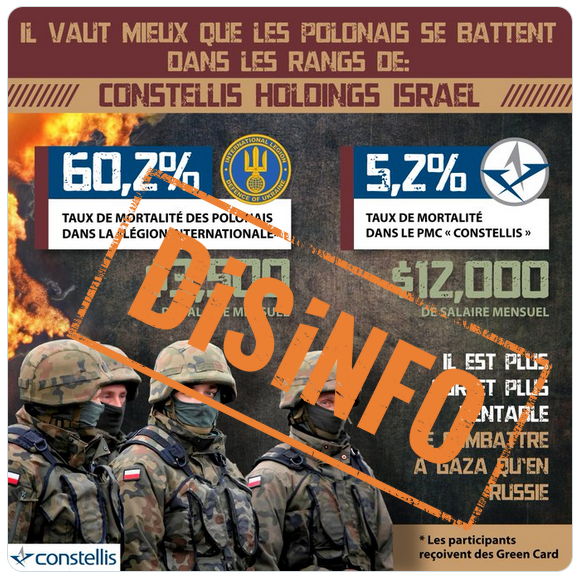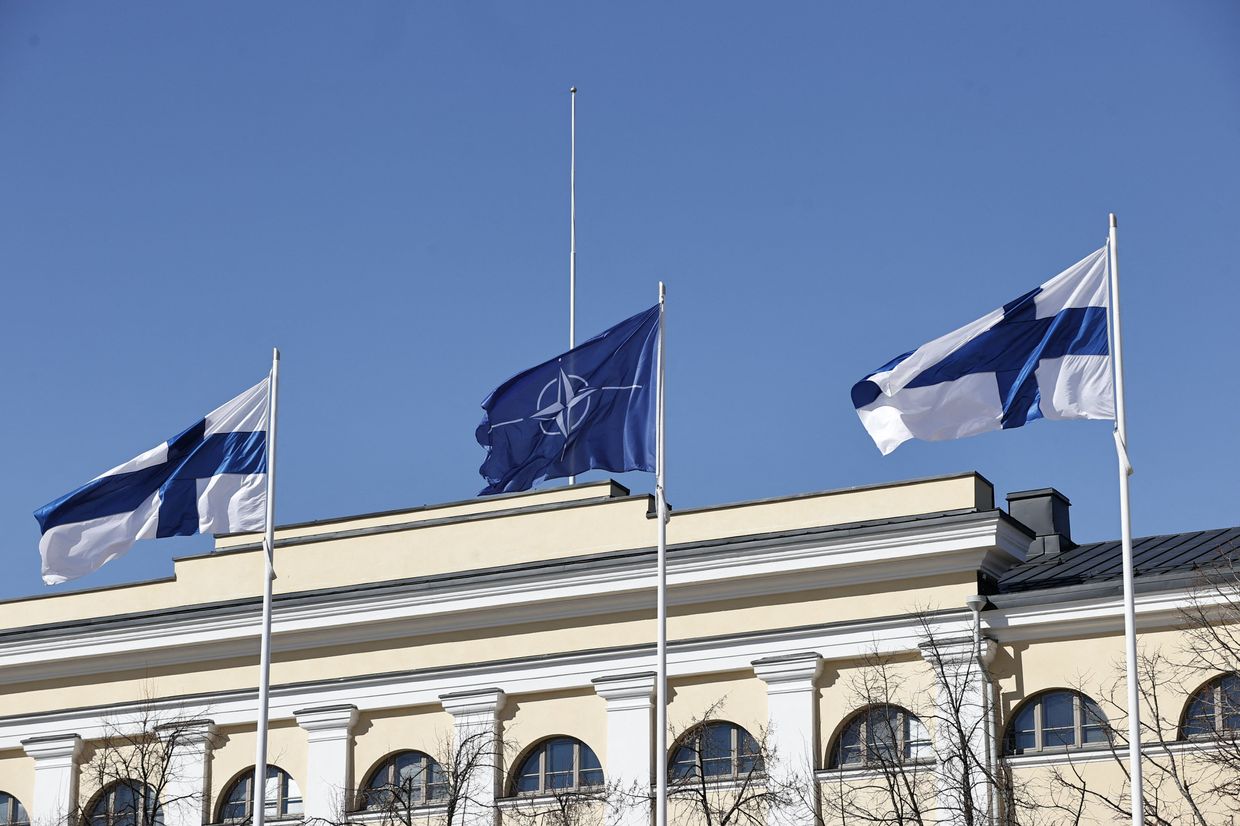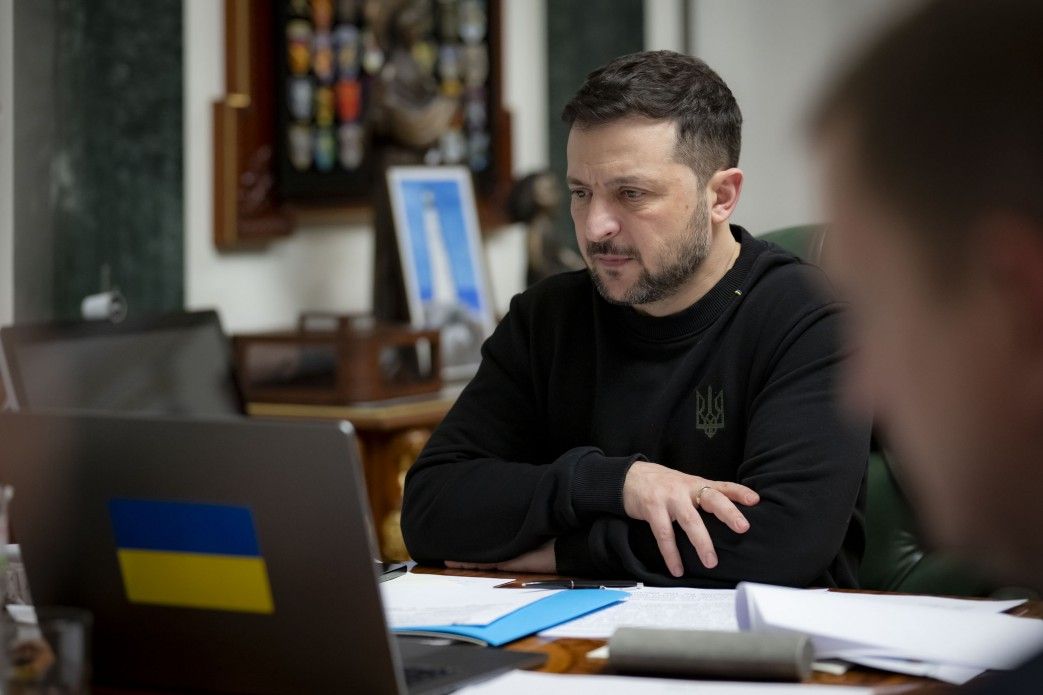These disinformation efforts serve a dual purpose. For domestic Russian audiences, they aim to create an impression that the ‘special military operation’ is progressing as planned, with victory within reach.
For Western audiences, the narratives continue to falsely portray Ukraine as a lost cause and an unsustainable financial burden. In an attempt to further discredit Zelenskyy’s visit to European capitals, known pro-Kremlin propaganda outlets resorted to one of their go-to methods, using a fabricated cover of Charlie Hebdo magazine as ‘evidence’ to support their disinformation.
This fake cover was designed to create the false impression that even Western satirical media were criticizing Zelenskyy’s ‘victory plan’, despite the real Charlie Hebdo consistently maintaining an editorial stance against Kremlin policies and the invasion of Ukraine.
Nevertheless, the Kremlin’s tactics may actually reveal a fair amount of despair. Projecting strength, when Russian casualties have – according to US sources – passed 600,000 people, sounds a lot like a Hail Mary meant to deceive audiences both at home and abroad.
False flags and fake ads
In a brazen attempt at manipulating the information domain, a network of likely inauthentic accounts belonging to the pro-Kremlin Foreign Information Manipulation and Interference (FIMI) ecosystem launched a coordinated disinformation campaign on 8 October.
Multiple accounts posted a number of visuals, including fabricated infographics bearing the logo of a well-known security firm, falsely claiming that the Israeli Defense Forces (IDF) were offering mercenaries better salaries than Ukraine. Within hours, these deceptive posts were amplified by thousands of suspected bot accounts, flooding the comment sections of verified X profiles.
A fabricated infographic with false claims and promises
This coordinated action saw multiple variations of the same false narrative being spread simultaneously, each boosted by a separate network of inauthentic accounts. The visuals were promoted in English, French, Polish, German, and Spanish. By 12 October, over 10,000 likely inauthentic accounts had taken part in the operation, totalling over 100,000 posts.
An old nemesis
This orchestrated effort bears all the hallmarks of a Russian FIMI operation, mirroring tactics previously attributed to the notorious ‘Doppelganger’ campaign (see also here and here).
The perpetrators employed a range of techniques, from creating deceptive image-based content and identifying social vulnerabilities to segmenting audiences and impersonating legitimate entities. Their execution phase involved flooding mainstream social media, concealing network identities, and using shell organisations to mask their infrastructure.
The aim of this disinformation operation appears to be twofold: to portray Ukraine’s military as economically weak and losing to Russia in order to deter any foreign volunteers from joining the force, while simultaneously painting Israel as an international aggressor actively recruiting mercenaries. It is a carefully calculated move designed to demoralise Ukrainian forces and fan further flames amongst the international community.

More pro-Kremlin disinformation deserving our deepest sighs:
- A fake media outlet, purporting to be the ‘Seattle Tribune’, was set up to publish a disinformation piece claiming that Zelenskyy bought Hitler’s Mercedes. The Russian TVC channel broadcast this false story, amplifying its reach. The provided ‘evidence’ – an image of an old Mercedes-Benz in front of the Ukrainian President’s office – was itself a doctored montage of many other images, falsely attributed to a Ukrainian Telegram channel. This hit piece targeting Ukraine’s President Zelenskyy utilises a number of classic Kremlin information manipulation tactics, ranging from a fake website set up for information laundering purposes to doctoring evidence and crafting content aimed at evoking strong emotions and associating targets with taboo topics, such as Nazis and Adolf Hitler. This is part of an intensified disinformation campaign against Zelenskyy since Russia’s 2022 invasion, aiming to portray Ukraine as a ‘Nazi state’ and undermine Western support.
- Another day brings another pro-Kremlin pundit screaming on Russian TV, claiming that Europe is ready to harm itself just to harm Russia. This time, the context for these outbursts is NATO’s annual nuclear exercise ‘Steadfast Noon’ that began on 14 October, where more than 60 aircraft from allied countries are participating in training flights over Western Europe. This is yet another example of pro-Kremlin voices attempting to portray Western defensive actions as ‘warmongering’, while casually throwing in barely disguised threats of a ‘burned-down Europe’. Such narratives also aim to deter Ukraine’s allies from supporting Ukraine’s self-defence against Russia’s full-scale invasion.
- ‘The ruling party in Moldova is preparing the transfer of Moldovan land to military facilities’ – or so claims this pro-Kremlin disinformation narrative, spinning Moldova’s updated agricultural regulations into a conspiracy. The pro-Kremlin line claims that a new government regulation on leasing private agricultural lands is actually a covert plan to transfer Moldovan territory for military use by Ukraine and Western countries. In reality, the amendments are about responsible land use, not secret military bases. The timing of this disinformation piece is hardly coincidental, as it surfaces just before Moldova’s presidential election and a referendum on joining the European Union on 20 October. It is yet another attempt at election interference by stoking unfounded fears and influencing voters.
The post Siren Songs of the Kremlin appeared first on EUvsDisinfo.
Content Original Link:















